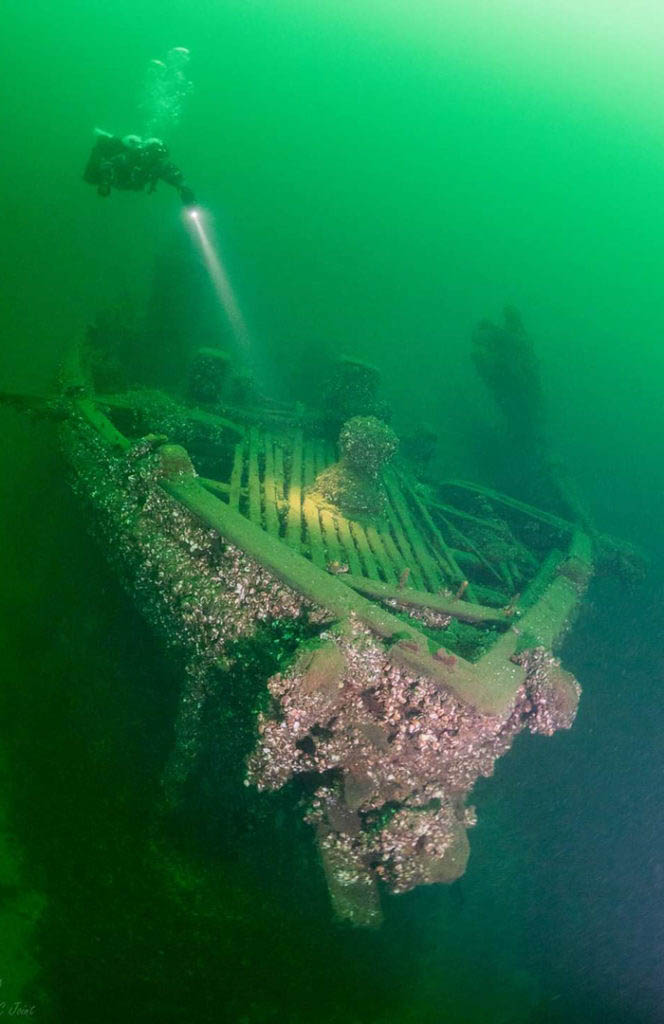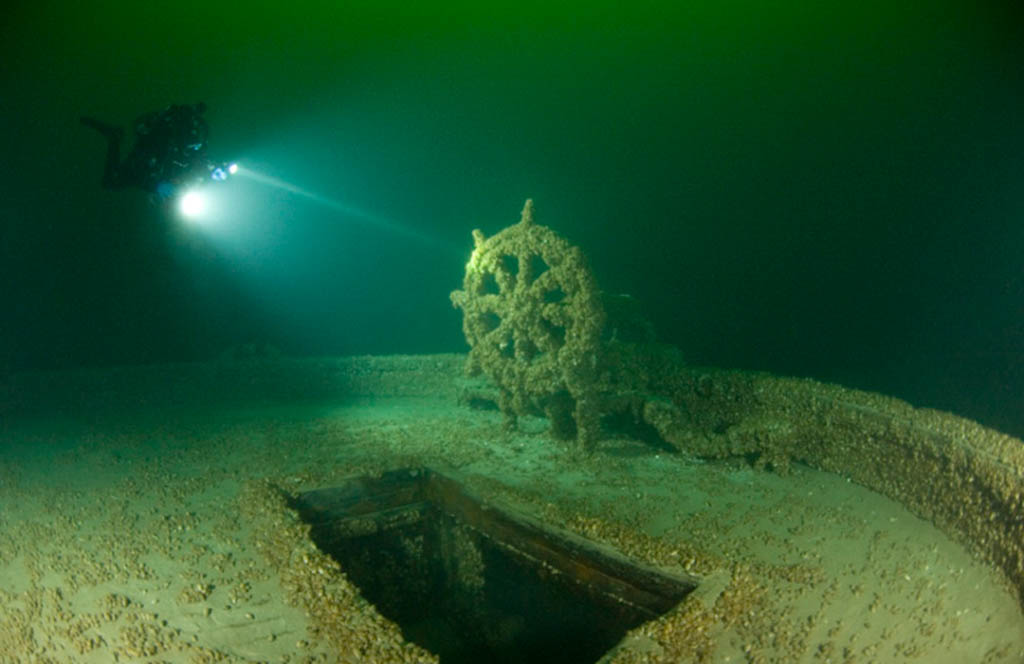As a terrestrial being, my perspective of the natural beauty of Prince Edward County is rather unique. I view its natural beauty from above the waterline of Lake Ontario, admiring its invaluable wetlands, its seasonal avian visitors and its spectacular shoreline.
However, as a marine scientist and diver, I am also privileged to gaze at its underwater vistas, especially at the scores of historical shipwrecks slumbering on the dark lake-bed.
Surely, you’ve heard of the Bermuda Triangle, responsible for countless shipwrecks and vanished airplanes. But did you know that Lake Ontario has its own hungry vortex of doom? There are somewhere between 270 and 500 shipwrecks in Lake Ontario’s eastern basin, and most of them are in an area known as The Marysburgh Vortex. The three points of this ‘triangle’ are Wolfe Island, Mexico Bay near Oswego, New York, to Point Petre in Prince Edward County.
The Marysburgh Vortex is a curious region of magnetic anomaly. Navigation within the area is dangerous because the magnetic field can offset a compass by 20 degrees! Just 25 feet beneath the surface of the lake lies a ring-shaped shoal, likely from a meteorite impact 460 million years ago that deposited these compass-confusing minerals.
Beyond retaining a snapshot of history for recreational divers, the wrecks are a study of how human objects can affect natural underwater environments with little disruption. As the years pass, these sleeping ships become homes for fish and other marine animals.

The shipwrecks in the Marysburgh Vortex serve as sub-aquatic condominiums for myriad fish species, especially, vast schools of pelagic bait-fish, including native species like Rainbow Smelt and invasive species like Alewives (which threaten native species).
These long-lost, drowned ships not only provide shelter for these bait-fish from marauding predators but also serve as a perpetual source of nutrition for them, with the abundant growth of phyto-plankton and varied zoo-plankton.
A diver might even see invasive zebra mussels at home on shipwrecks in Lake Ontario. These filter-feeding mollusks eat plankton and make the water crystal clear for divers, but can have harmful effects on the aquatic food web.
It is not uncommon to discover a solitary large trout or salmon residing in the sanctuary of a shipwreck, surveying its watery domain for uninvited interlopers. These territorial, pescatorial “Landlords” tend to be rather “bossy”—they have even been known to challenge those strange-looking alien visitors, AKA, scuba divers.
Maintaining a healthy ecosystem is important to supporting future quests to discover long-lost shipwrecks off Prince Edward County. A great example of the unique relationship between these diving quests and the surrounding ecosystem is how divers sometimes use the sudden appearance of huge schools of pelagic bait-fish on side-scan sonar monitors as an indicator that they are approaching their targeted anomaly on the lakebed.
A National Marine Conservation Area in Lake Ontario’s eastern basin would protect these glimpses of history and joining of human influence on aquatic ecosystems. What’s more, there are still many more shipwrecks in the area that are yet to be found.
Article Submitted by Kenn M. Feigelman
Kenn M. Feigelman was born in Montreal. In 1973, he co-founded Deep/Quest 2 Expedition. He attended McGill and Concordia University, receiving his Doctorate in Marine History from the College of Marine Arts in South Carolina. He is an avid marine scientist, photographer, and documentary film producer.
Follow Kenn on Facebook and visit Deep/Quest 2 Expedition





